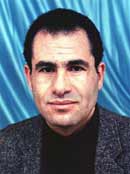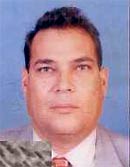Contents: 2024 | 2023 | 2022 | 2021 | 2020 | 2019 | 2018 | 2017 | 2016 | 2015 | 2014 | 2013 | 2012 | 2011 | 2010 | 2009 | 2008 | 2007 | 2006 | 2005 | 2004 | 2003 | 2002 | 2001
2003, 7
The influence of the temperature on the power structure behaviour
language: English
received 06.10.2002, published 04.03.2003
Download article (PDF, 200 kb, ZIP), use browser command "Save Target As..."
To read this document you need Adobe Acrobat © Reader software, which is simple to use and available at no cost. Use version 4.0 or higher. You can download software from Adobe site (http://www.adobe.com/).
ABSTRACT
The functional limits of a thyristor are defined by an essential parameter: the allowable maximum junction temperature. It can be of 125°C. The technical specification of each type of thyristor gives the limit values of the functional temperature, which will be for example of –55°C to 125°C.
The electrical energy dissipated in the thyristor at any direction of the current, appears under the form of a thermal energy across the junctions, where the total power lost in the crystal causes an increase of the junction temperature.
In fact, this value represents only a very little part of the power available in the circuit. But it shouldn’t be forgotten that the ambient temperature represents an energetic level from which, the increase of the junction temperature is done. However, this latter can reach a value relatively increased, especially if we know that the industrial ambient temperature is very often approximately equal to 50°C or 60°C.
8 pages, 7 figures
Сitation: A. Hallouche, H. Aourag. The influence of the temperature on the power structure behaviour. Electronic Journal “Technical Acoustics”, http://www.ejta.org, 2003, 7.
REFERENCES
1. Nigel Cousteard, Robert Pezzani. Understanding the gate assisted turn-off of an interdigited ultra-fast asymmetrical power thyristor. THOMSON-CSF, Paris, 1981.
2. Philipe Le Turcq. Physique des composants actifs a semiconducteurs, 1978.
3. S. M. Sze. Physics semiconductor devices. John Willey & Sons, New York, 1981.
4. Sorab K. Ghandi. Semiconductor power devices. John Willey & Sons, New York, 1977.
5. Pearson & Sen. Designing optimum snubber circuits for the transistor bridge configuration. Power Converter, 1982.
6. Harris Semiconductor, Parallel operation of semiconductor switches, 1998.
7. Jurie Decter, Nigel Machin and Robert Sheehy. Rectifier technology pacific, Australia, 2000.
8. R. V. Honorat. Thyristors, Triacs et GTO. Edition Radio, Paris, 1987.
 |
Abdehamid Hallouche was born in Sidi-Bel-Abbes, Algeria. Diploma of Electrotechnic Engineering degree (with honours) from the University of Science and Technology, Oran, Algeria, these d'etat in Physics (Material Sciences) from the University of Sidi-Bel-Abbes, Algeria. e-mail: hall_hamid(at)yahoo.fr |
|
 |
Hafid Aourag - Professor in Physics, was born in Sidi-Bel-Abbes, Algeria. DES on Physics from the University of Sidi-Bel-Abbes, Algeria, Phd on Physics. Now dealing with Computational Material Science. |
|
